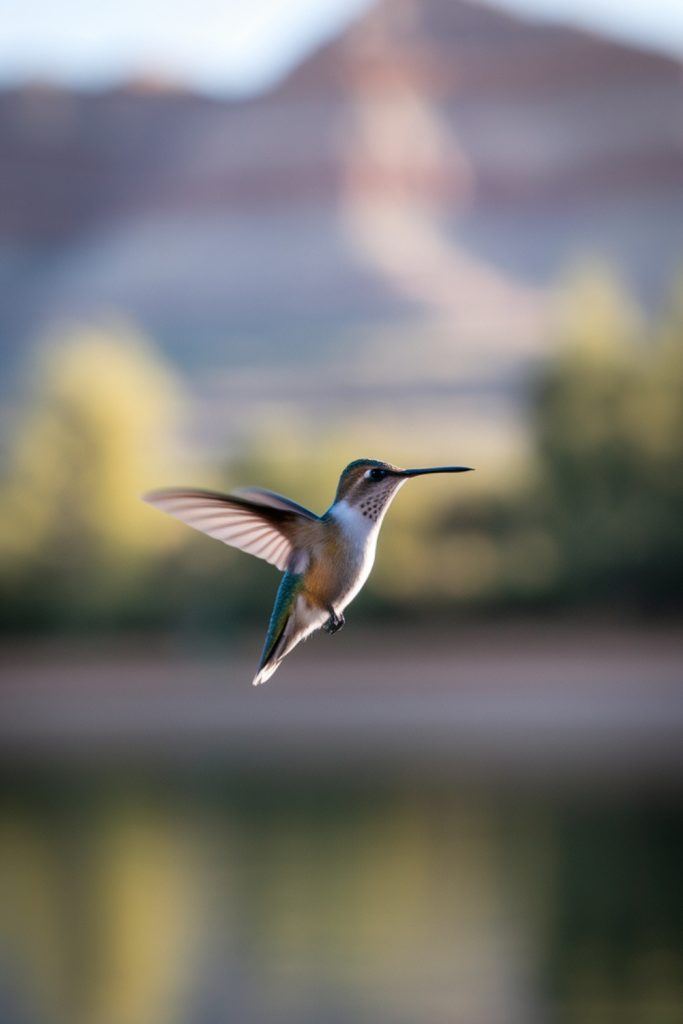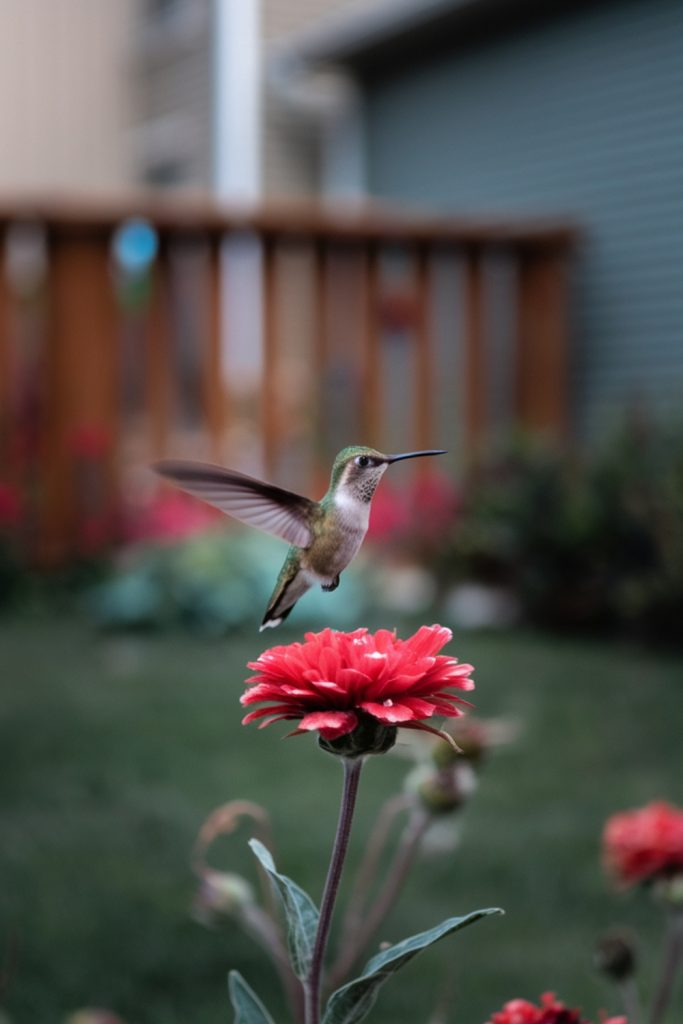Hummingbirds are a delightful sight in Utah’s gardens, but they don’t stay all year. If you’re wondering when these fascinating birds leave the Beehive State1, it typically happens in late September to early October.
Let’s explore their seasonal patterns and when to expect their departure.
Hummingbird Species in Utah
Before exploring their departure times, it’s important to note that Utah hosts several hummingbird species, including:
- Black-chinned Hummingbird
- Broad-tailed Hummingbird
- Calliope Hummingbird
- Rufous Hummingbird.
Each species may have slightly different migration patterns, but they generally follow similar timelines.
Related Post: Where Do Hummingbirds Go in the Winter?

The Great Hummingbird Exodus
Most hummingbirds begin their southward migration from Utah in late August to early September. However, the exact timing can vary based on several factors:
- Species: Some species, like the Rufous Hummingbird, may start their journey earlier than others.
- Weather conditions: An early cold snap might prompt earlier departure.
- Food availability: If nectar sources are plentiful, some birds might linger longer.
- Individual bird health and age: Younger or less healthy birds might leave earlier to ensure a successful migration.
General Timeline
- Late August: Some hummingbirds, particularly males, begin to depart.
- Early to Mid-September: Peak migration period for most hummingbirds in Utah.
- Late September to Early October: Last hummingbirds typically leave, though some stragglers might remain.

Preparing for Departure
As autumn approaches, hummingbirds enter a state called hyperphagia, where they consume more food to build up fat reserves for their long journey. You might notice increased activity around feeders during this time.
Should You Remove Feeders?
A common misconception is that leaving feeders out will prevent hummingbirds from migrating. This isn’t true! Hummingbirds are triggered to migrate by changes in daylight length, not food availability. In fact, leaving feeders out can help late migrants or stragglers fuel up for their journey.
How to Help
To support hummingbirds during their pre-migration period:
- Keep feeders clean and filled with fresh nectar.
- Plant late-blooming flowers rich in nectar.
- Avoid using pesticides in your garden.

When Will They Return?
While it’s sad to see them go, remember that hummingbirds will return to Utah in the spring, typically arriving in late April to early May.
By understanding the migration patterns of Utah’s hummingbirds, you can better appreciate these amazing birds and perhaps catch a glimpse of them before they embark on their incredible journey south.
FAQs: When Do Hummingbirds Leave Utah?
- Q: How far do Utah’s hummingbirds travel for the winter?
A: Many hummingbirds that summer in Utah migrate to Mexico or Central America, traveling distances of 500 to 2000 miles depending on their specific winter destination. - Q: Do hummingbirds fly non-stop to their winter homes?
A: No, hummingbirds make several stops along their migration route to rest and refuel. The entire journey can take several weeks to a month. - Q: How do hummingbirds prepare for such a long journey?
A: Hummingbirds enter a state called hyperphagia, where they consume up to 50% of their body weight in nectar and insects daily to build up fat reserves for migration. - Q: Can Utah residents do anything to help migrating hummingbirds?
A: Yes! Besides maintaining clean feeders, you can plant late-blooming flowers rich in nectar and avoid using pesticides in your garden. - Q: Do juvenile hummingbirds born in Utah know how to migrate?
A: Yes, even young hummingbirds born that year instinctively know when and where to migrate, although they may leave slightly later than adults. - Q: How do weather conditions affect hummingbird migration from Utah?
A: Unfavorable weather like strong headwinds or storms can delay migration. Conversely, favorable tailwinds might accelerate their journey. - Q: Are there any hummingbird species that stay in Utah year-round?
A: No, all hummingbird species that visit Utah are migratory. The harsh winter conditions in Utah cannot support hummingbirds’ high-energy needs. - Q: What should I do if I see a hummingbird in Utah very late in the season?
A: Continue to provide fresh nectar in clean feeders. If the bird appears weak or injured, especially if temperatures are dropping, contact a local wildlife rehabilitator for advice. - Q: How fast do hummingbirds fly during migration?
A: Hummingbirds can fly at speeds of 20-45 miles per hour during migration, covering up to 20-30 miles per day. - Q: Do hummingbirds return to the same locations in Utah each year?
A: Many hummingbirds do exhibit site fidelity, often returning to the same areas where they’ve successfully bred in previous years.
Reference:
